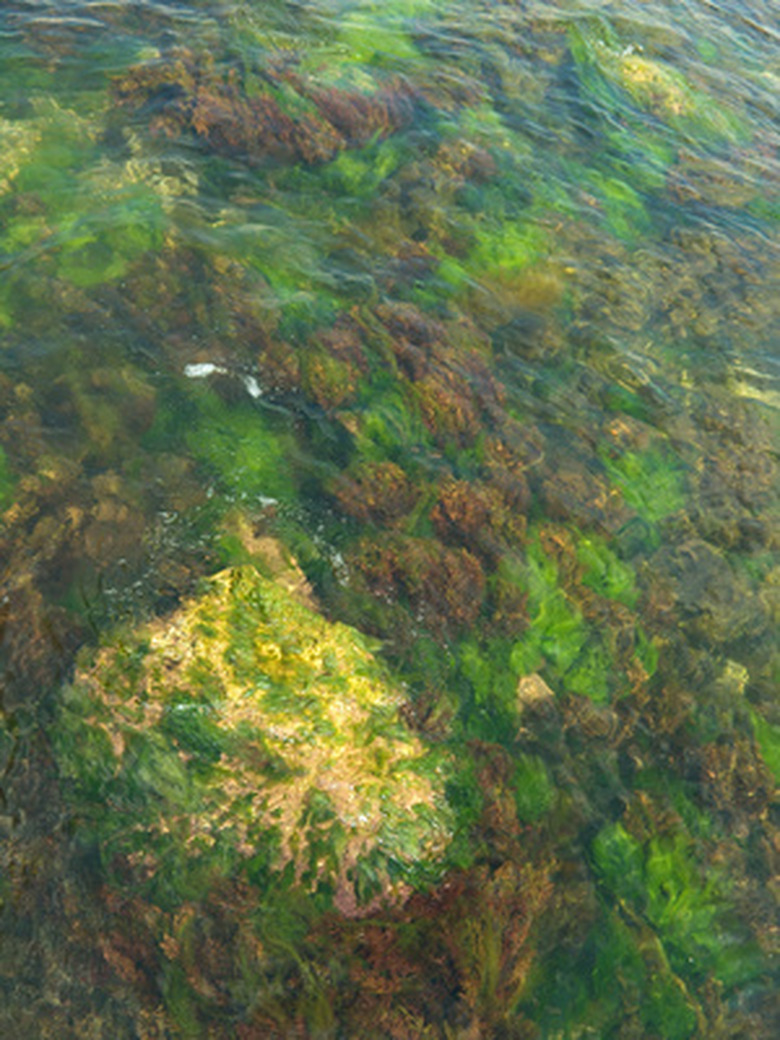The Characteristics Of Golden Algae
The name "golden algae" is used to refer to over 1,200 species of algae. However, the golden algae that is most often in the news is Prymnesium parvum. This type of algae occurs worldwide and can produce toxic algal blooms. Characteristics of Chrysophyceae, the class that golden algae belongs to, include the presence of the pigment fucoxanthin and the fact that most are photosynthetic.
Fucoxanthin gives these algae a brown or olive-green color, which is why they are also called golden-brown algae; examples of members of this class of algae have been dated to about 145 million years ago, according to Aquatic Community. The golden algae genus of most concern, Prymnesium, is associated with toxic blooms and fish kills in rivers, lakes and coastal waters.
Golden Algae Biology
Golden Algae Biology
Microscopic and unicellular, golden algae can survive in a wide range of temperatures and salt levels. Found in rivers, lakes and coastal waters around the planet, golden algae contains chlorophyll and can make its own food through photosynthesis. The single-celled species has two flagella, which are hair-like structures that the algae uses to move around in the water.
Although golden algae can make its own food with the energy of the sun, it also preys on other aquatic organisms. Golden algae catches its prey with the help of multiple toxins, chemical compounds that the organism can make when it is under stress. These toxins have a wide range of specific effects, including slowing down bacteria, attacking the cells of other organisms and repelling some predators of golden algae, according to Texas Parks & Wildlife.
There are non-toxic strains of golden algae, according to the U.S. National Office for Harmful Algal Blooms. Also, some of the toxins produced by golden algae break down in sunlight, and other toxins are less harmful at lower pH levels. Therefore, just because there is golden algae in a water body does not mean that it is toxic; on the other hand, low densities of the species can make the area unsafe even when the water does not exhibit the characteristic golden bloom.
Harmful Blooms of Golden Algae
Harmful Blooms of Golden Algae
When golden algae releases its toxins into the water, the chemical compounds have an effect on the entire ecosystem. The toxins attack cells in the gills and fins of fish and amphibians, damaging some of them so badly that many do not recover. Fish kills reduce the populations of fish in the water, which negatively impacts the larger fish that prey on the species affected by golden algae toxins.
Harmful golden algae blooms have caused fish kills in Europe, Asia, Australia and the United States. Golden algae was first identified in Texas in 1985 and has since been found in several other states in the U.S., including New Mexico, Colorado, Wyoming, North Carolina, South Carolina, Georgia, Arkansas and Alabama.
Algal blooms can last for days, weeks or months, and the factors that trigger toxic bloom formation are still not well understood. Scientists believe that blooms are triggered by a combination of factors, including water temperature, water chemistry and rate of water flow.
Managing Golden Algae
Managing Golden Algae
Scientists continue to investigate fish kills for clues about managing algal blooms. Some strategies have been developed for protecting the commercial production of fish at hatcheries, including treating incoming water with ozone gas.
Although scientists don't have methods for preventing golden algae blooms in rivers and lakes, some treatments have been developed. However, toxic blooms of golden algae continue to threaten both farmed and native fish in waterways around the globe, so biologists are still working on strategies for preventing and mitigating the harmful effects of this species.
Cite This Article
MLA
Sloane, Christina. "The Characteristics Of Golden Algae" sciencing.com, https://www.sciencing.com/the-characteristics-of-golden-algae-13427864/. 30 September 2021.
APA
Sloane, Christina. (2021, September 30). The Characteristics Of Golden Algae. sciencing.com. Retrieved from https://www.sciencing.com/the-characteristics-of-golden-algae-13427864/
Chicago
Sloane, Christina. The Characteristics Of Golden Algae last modified March 24, 2022. https://www.sciencing.com/the-characteristics-of-golden-algae-13427864/
